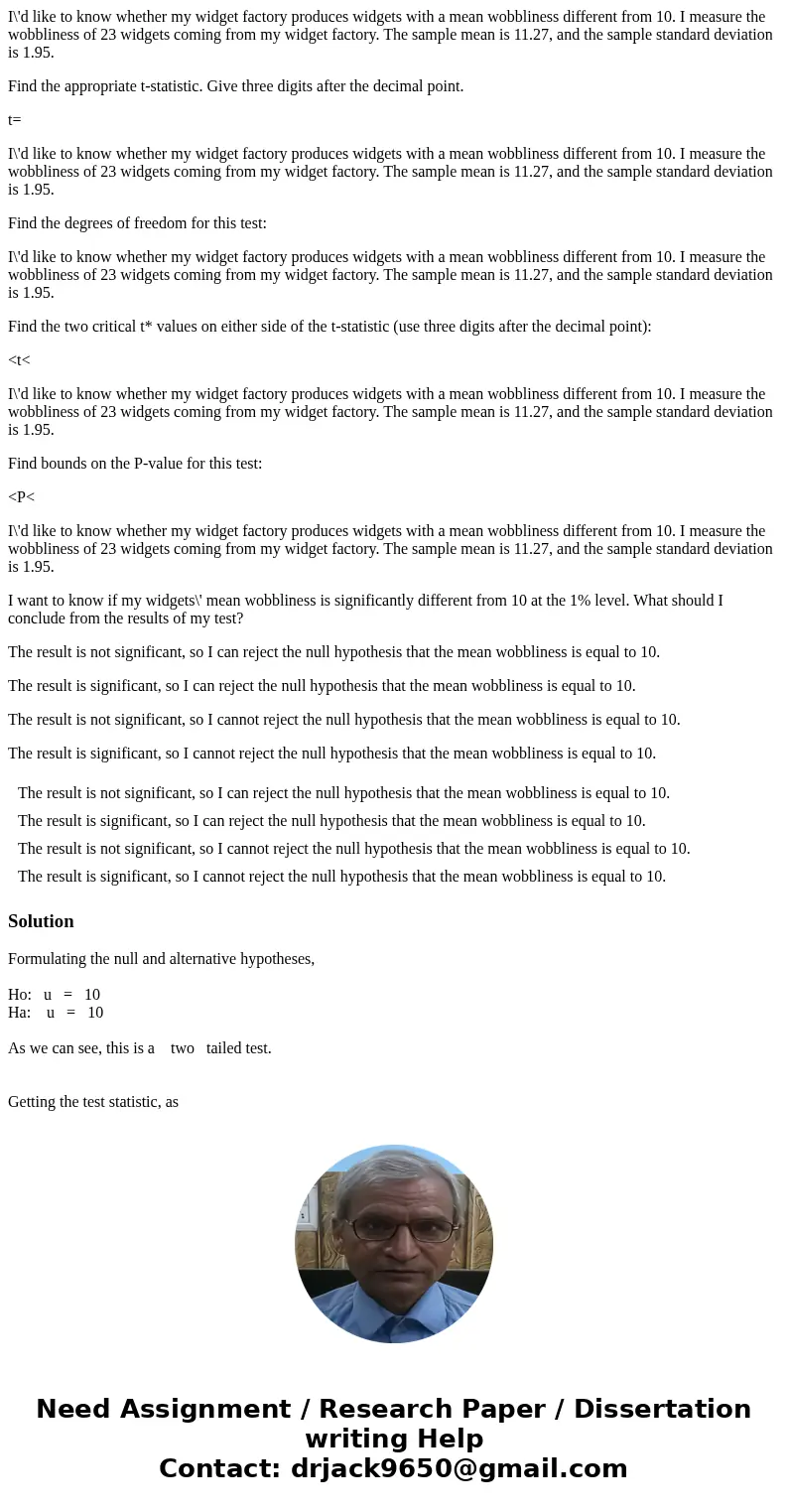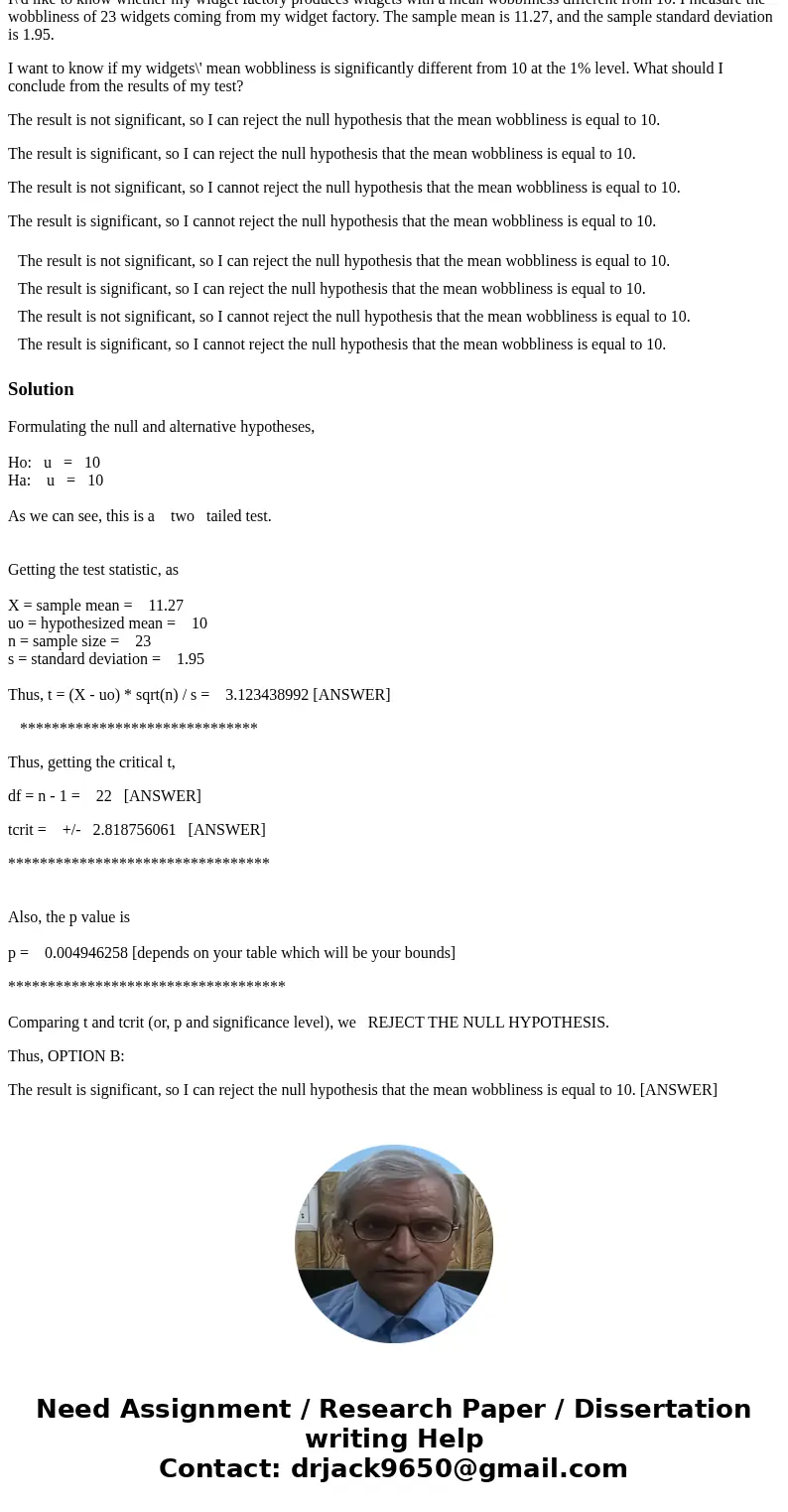Id like to know whether my widget factory produces widgets w
I\'d like to know whether my widget factory produces widgets with a mean wobbliness different from 10. I measure the wobbliness of 23 widgets coming from my widget factory. The sample mean is 11.27, and the sample standard deviation is 1.95.
Find the appropriate t-statistic. Give three digits after the decimal point.
t=
I\'d like to know whether my widget factory produces widgets with a mean wobbliness different from 10. I measure the wobbliness of 23 widgets coming from my widget factory. The sample mean is 11.27, and the sample standard deviation is 1.95.
Find the degrees of freedom for this test:
I\'d like to know whether my widget factory produces widgets with a mean wobbliness different from 10. I measure the wobbliness of 23 widgets coming from my widget factory. The sample mean is 11.27, and the sample standard deviation is 1.95.
Find the two critical t* values on either side of the t-statistic (use three digits after the decimal point):
<t<
I\'d like to know whether my widget factory produces widgets with a mean wobbliness different from 10. I measure the wobbliness of 23 widgets coming from my widget factory. The sample mean is 11.27, and the sample standard deviation is 1.95.
Find bounds on the P-value for this test:
<P<
I\'d like to know whether my widget factory produces widgets with a mean wobbliness different from 10. I measure the wobbliness of 23 widgets coming from my widget factory. The sample mean is 11.27, and the sample standard deviation is 1.95.
I want to know if my widgets\' mean wobbliness is significantly different from 10 at the 1% level. What should I conclude from the results of my test?
The result is not significant, so I can reject the null hypothesis that the mean wobbliness is equal to 10.
The result is significant, so I can reject the null hypothesis that the mean wobbliness is equal to 10.
The result is not significant, so I cannot reject the null hypothesis that the mean wobbliness is equal to 10.
The result is significant, so I cannot reject the null hypothesis that the mean wobbliness is equal to 10.
| ||
| ||
| ||
|
Solution
Formulating the null and alternative hypotheses,
Ho: u = 10
Ha: u = 10
As we can see, this is a two tailed test.
Getting the test statistic, as
X = sample mean = 11.27
uo = hypothesized mean = 10
n = sample size = 23
s = standard deviation = 1.95
Thus, t = (X - uo) * sqrt(n) / s = 3.123438992 [ANSWER]
******************************
Thus, getting the critical t,
df = n - 1 = 22 [ANSWER]
tcrit = +/- 2.818756061 [ANSWER]
*********************************
Also, the p value is
p = 0.004946258 [depends on your table which will be your bounds]
***********************************
Comparing t and tcrit (or, p and significance level), we REJECT THE NULL HYPOTHESIS.
Thus, OPTION B:
The result is significant, so I can reject the null hypothesis that the mean wobbliness is equal to 10. [ANSWER]


 Homework Sourse
Homework Sourse